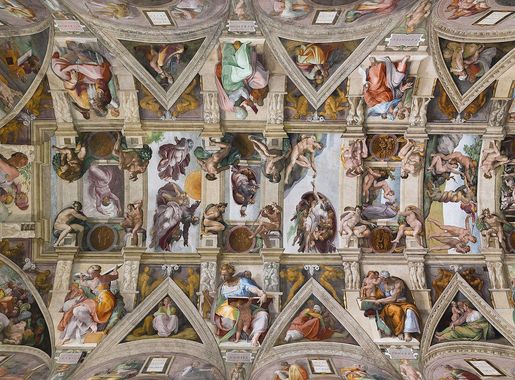
Rome: The Eternal City
Discover the timeless beauty of Rome, Italy's capital, where ancient history, stunning architecture, and vibrant culture create an unforgettable experience.
Welcome to Rome, the capital of Italy and a city where ancient history and modern life blend seamlessly. The streets of Rome are a living museum, with stunning ruins, grand piazzas, and exquisite architecture at every turn. From the majestic Colosseum to the awe-inspiring Vatican City, every corner of Rome tells a story of its glorious past. Stroll through the Roman Forum to get a glimpse of how life was in ancient Rome, and don't miss the Pantheon, a marvel of engineering and one of the best-preserved ancient buildings in the city. The Trevi Fountain and Spanish Steps offer perfect spots for relaxation and people-watching. Rome is also a paradise for food lovers. Indulge in traditional Roman dishes like carbonara and cacio e pepe, and don't forget to sample some of the city's famous gelato. The vibrant Trastevere neighborhood is a great place to experience Rome's nightlife, with its lively bars, restaurants, and charming cobblestone streets. No visit to Rome would be complete without exploring its world-class museums and art galleries. The Vatican Museums house an incredible collection of art, including Michelangelo's Sistine Chapel ceiling. The Galleria Borghese is another must-visit, with its stunning collection of Renaissance and Baroque art. Whether you're a history buff, a foodie, or simply looking to soak in the city's unique atmosphere, Rome offers something for everyone. Its timeless beauty and rich cultural heritage make it a destination that will leave you enchanted.
Local tips in Rome
- Buy tickets for popular attractions like the Colosseum and Vatican Museums in advance to avoid long queues.
- Wear comfortable shoes, as you'll be doing a lot of walking on cobblestone streets.
- Try to visit major sights early in the morning or late in the afternoon to avoid the crowds.
- Carry a reusable water bottle; there are free public water fountains, called 'nasoni,' throughout the city.
- Use public transportation or walk instead of driving; traffic in Rome can be very challenging.
- Be mindful of local dining customs; lunch is usually served from 1-3 PM and dinner from 8-10 PM.
- Take some time to just wander around and discover hidden gems in Rome's lesser-known neighborhoods.
Neighbourhoods in Rome
Rome: The Eternal City
Welcome to Rome, the capital of Italy and a city where ancient history and modern life blend seamlessly. The streets of Rome are a living museum, with stunning ruins, grand piazzas, and exquisite architecture at every turn. From the majestic Colosseum to the awe-inspiring Vatican City, every corner of Rome tells a story of its glorious past. Stroll through the Roman Forum to get a glimpse of how life was in ancient Rome, and don't miss the Pantheon, a marvel of engineering and one of the best-preserved ancient buildings in the city. The Trevi Fountain and Spanish Steps offer perfect spots for relaxation and people-watching. Rome is also a paradise for food lovers. Indulge in traditional Roman dishes like carbonara and cacio e pepe, and don't forget to sample some of the city's famous gelato. The vibrant Trastevere neighborhood is a great place to experience Rome's nightlife, with its lively bars, restaurants, and charming cobblestone streets. No visit to Rome would be complete without exploring its world-class museums and art galleries. The Vatican Museums house an incredible collection of art, including Michelangelo's Sistine Chapel ceiling. The Galleria Borghese is another must-visit, with its stunning collection of Renaissance and Baroque art. Whether you're a history buff, a foodie, or simply looking to soak in the city's unique atmosphere, Rome offers something for everyone. Its timeless beauty and rich cultural heritage make it a destination that will leave you enchanted.
When is the best time to go to Rome?
Iconic landmarks you can’t miss
Trevi Fountain
Discover the Trevi Fountain, a breathtaking Baroque masterpiece in Rome, where wishes are made and memories are created amidst stunning artistry and history.
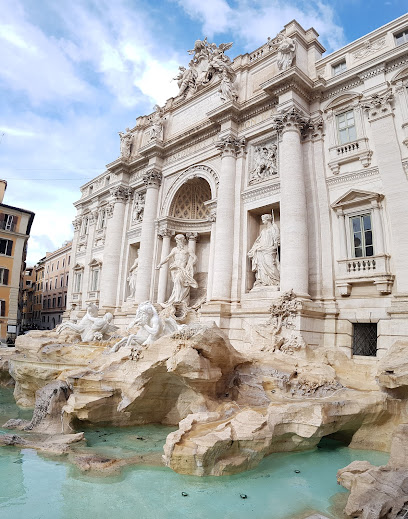
Colosseum
Explore the Colosseum, Rome's ancient amphitheater, an architectural marvel and a symbol of the Roman Empire's grandeur, steeped in rich history.

Pantheon
Explore the Pantheon, Rome's ancient temple turned church, renowned for its architectural brilliance and rich historical significance.
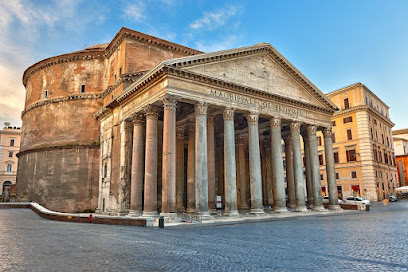
Piazza Navona
Discover the vibrant charm of Piazza Navona, where Baroque beauty meets lively street culture in the heart of Rome.
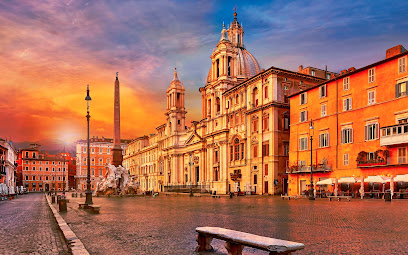
Roman Forum
Discover the rich history and majestic ruins of the Roman Forum, a must-visit archaeological site in the heart of ancient Rome.

Piazza del Popolo
Discover the splendor of Piazza del Popolo, a historical plaza in Rome, showcasing stunning architecture and vibrant local culture.
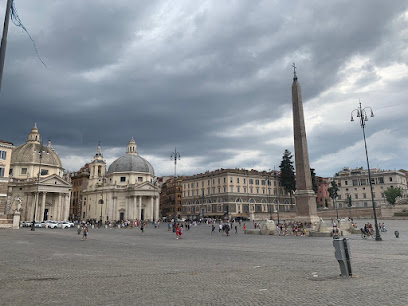
Castel Sant'Angelo
Discover the rich history and breathtaking views at Castel Sant'Angelo, a stunning fortress and museum along the Tiber River in Rome.
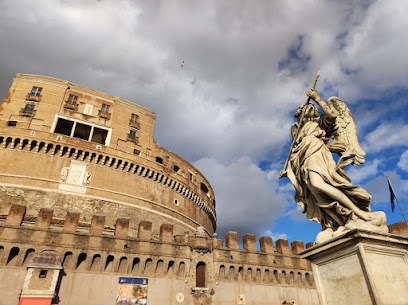
Sistine Chapel
Explore the Sistine Chapel, a breathtaking blend of art and spirituality showcasing Michelangelo's masterpieces in the heart of Vatican City.
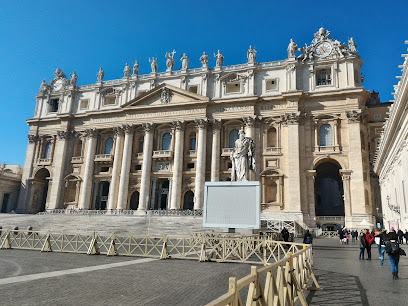
Spanish Steps
Experience the beauty and charm of the Spanish Steps, an iconic landmark in Rome, where history, culture, and breathtaking views await.
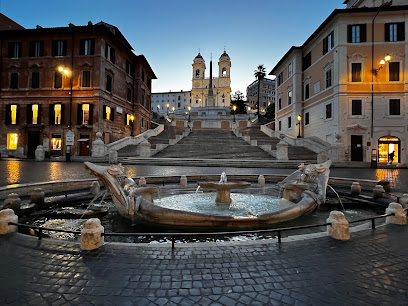
Monument to Victor Emmanuel II
Explore the Monument to Victor Emmanuel II, a stunning landmark in Rome that commemorates Italian unification with breathtaking views and rich historical insights.
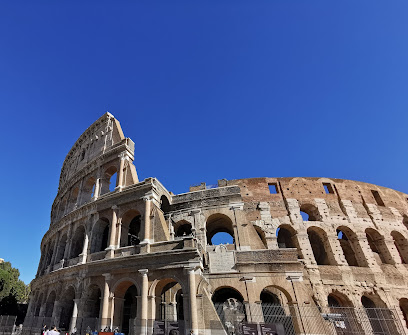
Piazza Venezia
Explore the majestic Piazza Venezia, a historical landmark in Rome that showcases Italy's grandeur and vibrant atmosphere, perfect for tourists and history enthusiasts.

Circus Maximus
Explore the vast, historic Circus Maximus, the ancient chariot racing stadium in the heart of Rome, surrounded by stunning views and rich history.
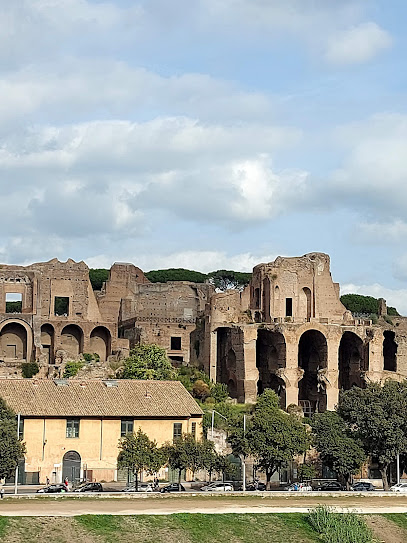
Largo di Torre Argentina
Explore the historic ruins of Largo di Torre Argentina, the site of Julius Caesar's assassination, and a vibrant sanctuary for Rome's beloved cats.

Parco della Mole Adriana
Explore the serenity of Parco della Mole Adriana, a lush garden in Rome, offering scenic beauty, artistic displays, and a peaceful retreat from the city.
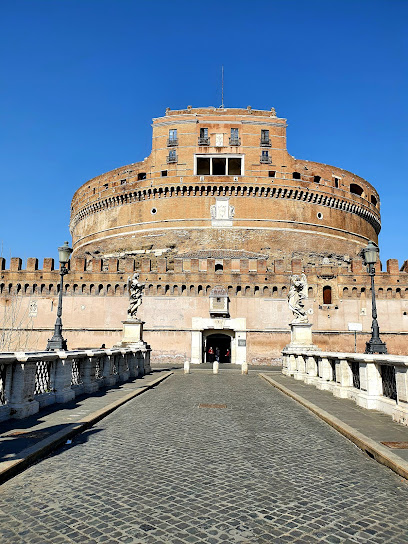
Trajan's Forum
Discover the rich history and stunning architecture of Trajan's Forum, a must-visit historical landmark in the heart of ancient Rome.
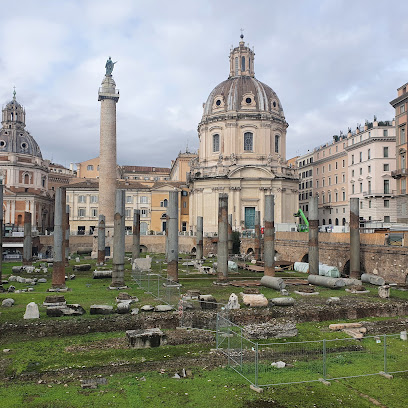
Unmissable attractions to see
Trevi Fountain
Discover the Trevi Fountain, a stunning Baroque masterpiece in Rome, where tradition meets artistry amidst the vibrant streets of the Eternal City.
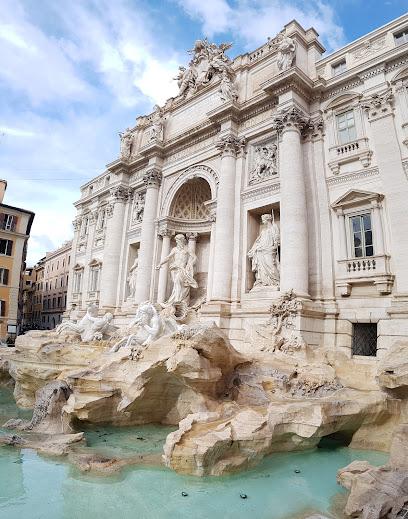
Colosseum
Explore the Colosseum, Rome's iconic historical landmark, and immerse yourself in the grandeur of ancient gladiatorial battles and architecture.
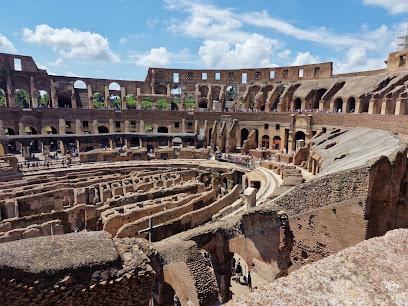
Pantheon
Explore the Pantheon in Rome, a stunning architectural wonder with a rich history, captivating interior, and a must-see for any traveler.
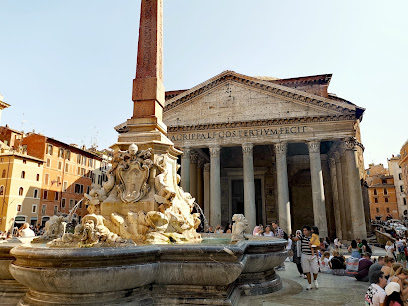
Piazza Navona
Discover the enchanting Piazza Navona, a historic square in Rome known for its stunning fountains, vibrant atmosphere, and rich cultural heritage.
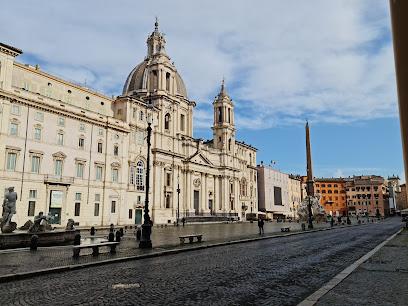
Vatican Museums
Explore the Vatican Museums: A breathtaking journey through art and history featuring masterpieces from the Renaissance to ancient times.

Roman Forum
Discover the Roman Forum, an open-air museum that showcases the heart of ancient Rome with its magnificent ruins and rich history.
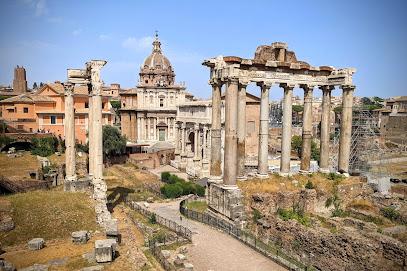
Castel Sant'Angelo
Explore Castel Sant'Angelo, Rome's historical fortress, and delve into a captivating journey through time with breathtaking views and rich cultural heritage.
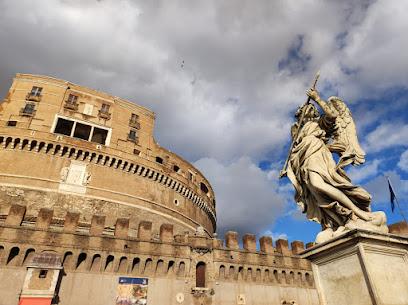
Sistine Chapel
Explore the breathtaking artistry of the Sistine Chapel, a must-visit spiritual and cultural landmark in Vatican City that showcases Michelangelo's genius.
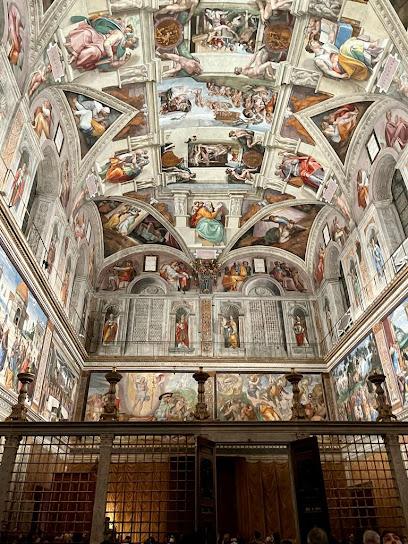
Villa Borghese
Discover the enchanting Villa Borghese, a cultural gem in Rome offering art, nature, and tranquility within its sprawling gardens.
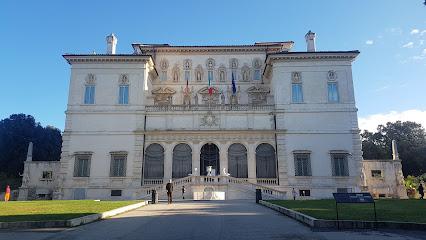
Circus Maximus
Discover the grandeur of Circus Maximus, the ancient chariot racing stadium in Rome, and immerse yourself in the city's rich historical tapestry.
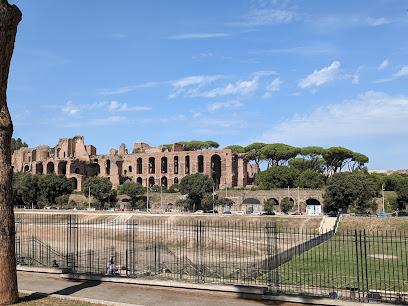
Papal Basilica of Saint Mary Major
Explore the breathtaking Papal Basilica of Saint Mary Major, a masterpiece of art and spirituality in the heart of Rome, Italy.

Largo di Torre Argentina
Discover the ancient ruins and vibrant cat sanctuary at Largo di Torre Argentina, a captivating archaeological gem in the heart of Rome.

Villa d'Este
Discover the splendor of Villa d'Este in Tivoli, a UNESCO World Heritage site renowned for its stunning Renaissance gardens and architectural marvels.
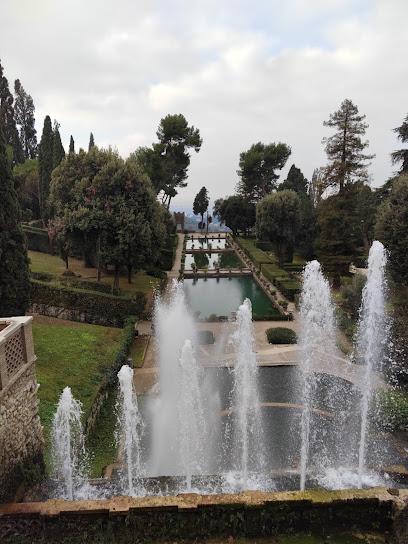
Stadio Olimpico
Experience the thrill of Italian sports and concerts at Stadio Olimpico, Rome's iconic stadium that captures the spirit of the city's vibrant culture.
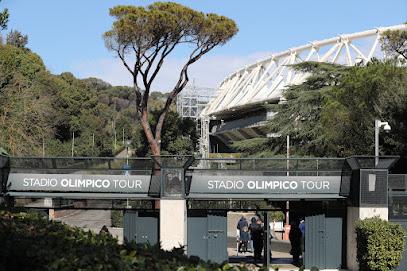
Basilica of San Giovanni in Laterano
Explore the Basilica of San Giovanni in Laterano, the oldest basilica in Rome, rich in history, art, and spirituality.
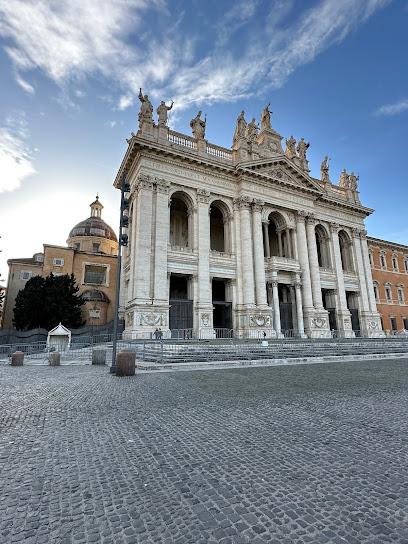
Essential places to dine
Cantina e Cucina
Experience authentic Roman cuisine at Cantina e Cucina—where every dish tells a story and every sip is a journey through Italy.
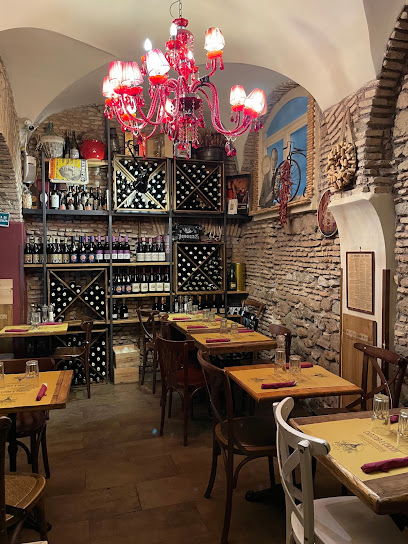
Tonnarello Scala
Experience authentic Roman cuisine at Tonnarello Scala – where traditional flavors meet modern elegance in a charming setting.
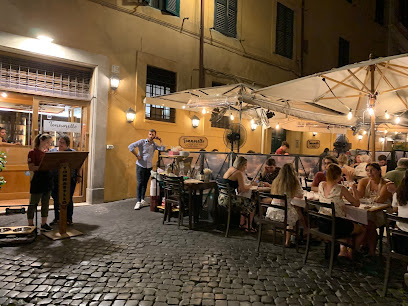
That's Amore Restaurant
Discover authentic Italian flavors at That's Amore Restaurant in Rome – where every dish tells a story!
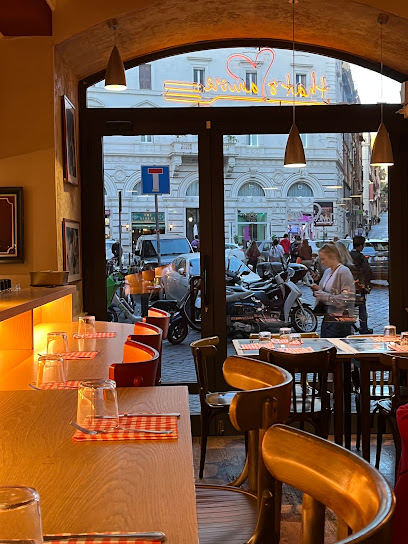
Taverna del Seminario
Discover authentic Roman cuisine at Taverna del Seminario – where every dish tells a story.
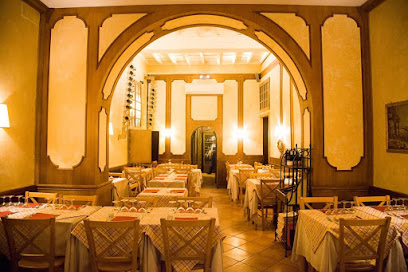
Roscioli Salumeria con Cucina
Discover authentic Italian flavors at Roscioli Salumeria con Cucina, where tradition meets modern culinary artistry in the heart of Rome.
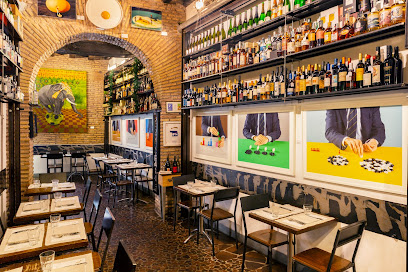
Iari The Vino
Discover authentic Italian cuisine in the heart of Rome at Iari The Vino – where every meal is a celebration of flavors.
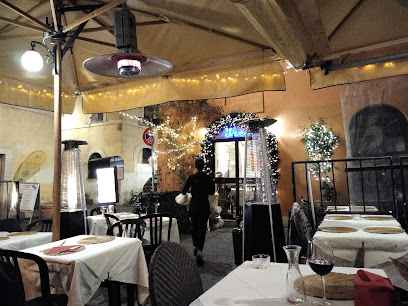
CiPASSO
Experience authentic Italian dining at CiPASSO in Rome – where tradition meets innovation in every delectable dish.
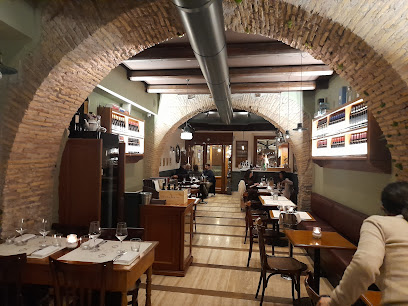
433
Discover authentic Italian flavors at Ristorante 433, where traditional Roman cuisine meets warm hospitality in the heart of Rome.
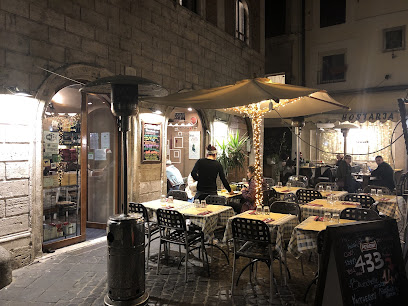
Taverna dei migliori
Experience authentic Italian cuisine at Taverna dei Migliori in Rome – where tradition meets taste.
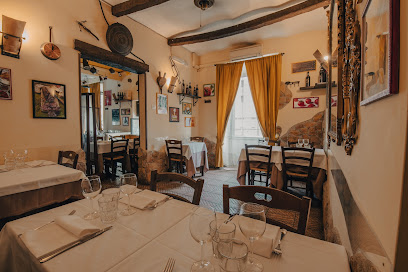
La Forchetta d´Oro
Discover authentic Italian flavors at La Forchetta d'Oro, where Roman culinary traditions meet a warm and inviting atmosphere.
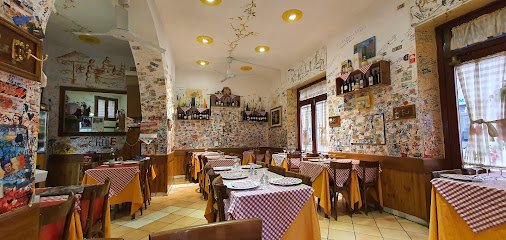
Roma Sparita
Experience authentic Roman cuisine at Roma Sparita in Trastevere—home to iconic dishes like Cacio e Pepe amidst charming surroundings.
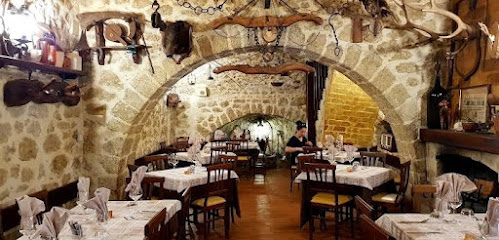
La Taverna dei Fori Imperiali
Experience authentic Italian flavors at La Taverna dei Fori Imperiali, nestled near Rome's historic Roman Forum.
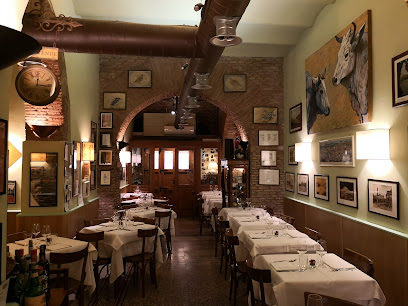
Osteria Barberini
Discover authentic Italian flavors at Osteria Barberini, where tradition meets taste in the heart of Rome.
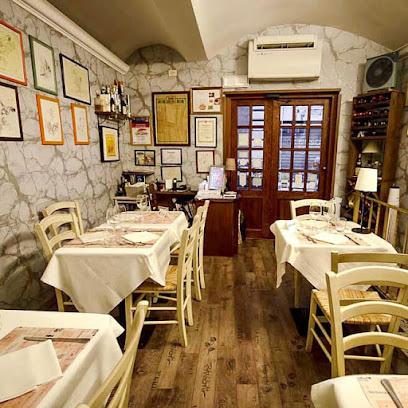
Life Ristorante
Experience exquisite Italian cuisine and fine wines at Life Ristorante in Rome—an upscale dining destination steeped in culinary tradition.
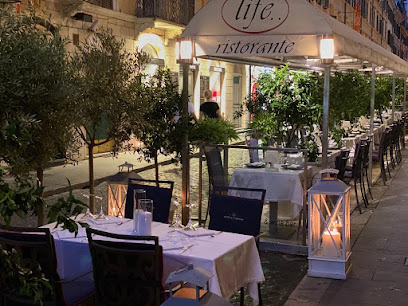
Divinostilia food&winebar
Experience authentic Italian cuisine at Divinostilia Food & Wine Bar in Rome, where exquisite dishes meet exceptional wines in a cozy atmosphere.
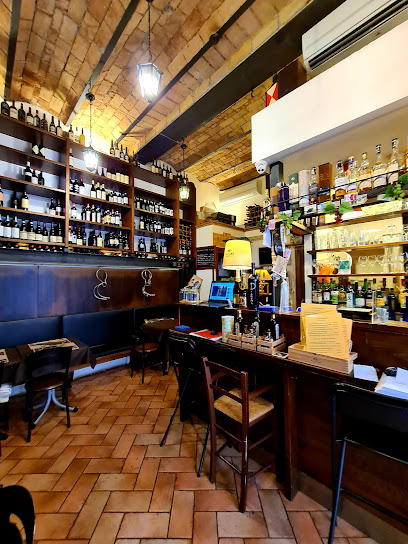
Markets, malls and hidden boutiques
RINASCENTE Rome Via del Tritone
Explore the luxury of shopping in the heart of Rome at Rinascente, where fashion meets culture and culinary delights await.
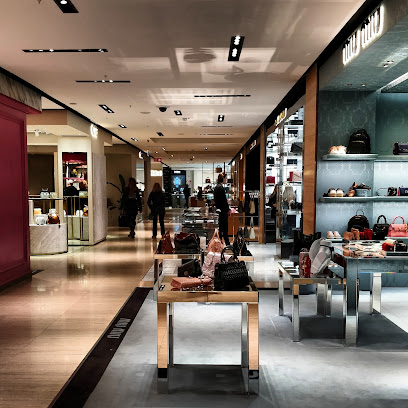
Stone Island Store Roma
Discover contemporary men's fashion at Stone Island Store Roma, where innovation meets style in the heart of Italy's capital.
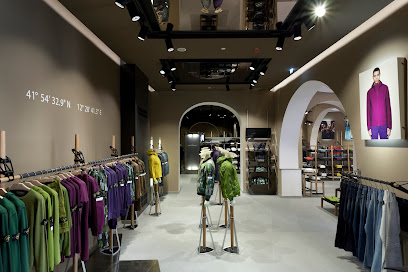
Rome Duck Store
Explore the enchanting Rome Duck Store for a memorable toy shopping experience in the heart of the Eternal City, perfect for all ages.
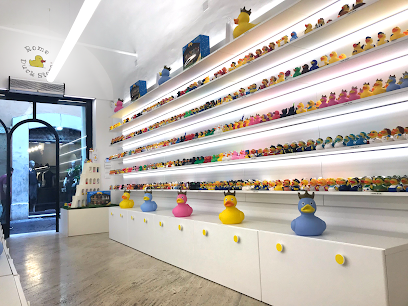
Sitenne Vintage Store
Discover unique vintage clothing and accessories at Sitenne Vintage Store, a hidden gem in the heart of Rome offering timeless fashion treasures.

Twice Vintage Shop
Explore Twice Vintage Shop in Rome for unique vintage clothing and accessories that add character to your wardrobe.
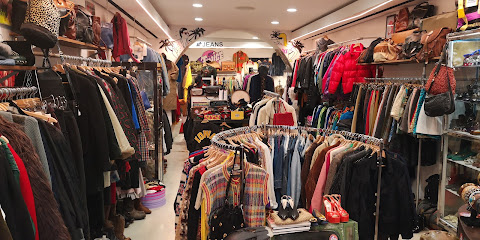
Blue Goose
Explore a vintage clothing haven in Rome's heart, where every piece tells a story and fashion meets history.
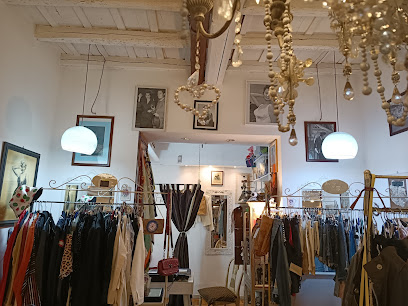
GENTE Roma Outlet
Explore GENTE Roma Outlet for the latest clothing trends at unbeatable prices in the heart of Rome's fashion scene.
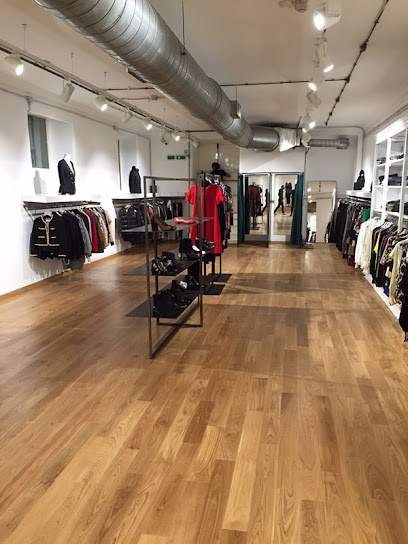
King Size Vintage
Shop unique vintage clothing at King Size Vintage in Rome, where every piece has a story and timeless style awaits.
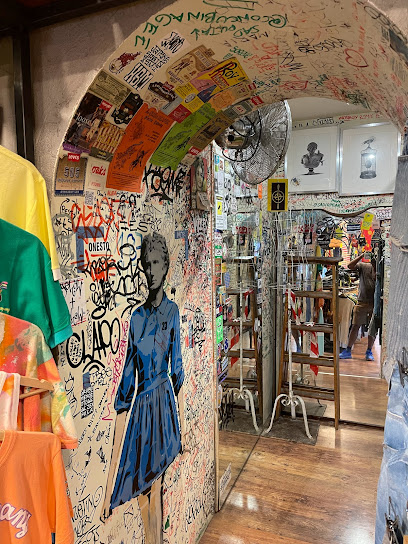
Manufactus Made In Italy
Explore the essence of Italian craftsmanship at Manufactus Made In Italy, your go-to gift shop in the heart of Rome.
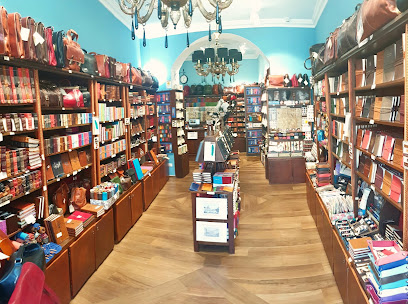
Souvenir Roma
Explore Souvenir Roma for a unique selection of gifts and mementos that capture the charm and history of Rome in every item.

Boutique Central
Explore Boutique Central in Rome for an exquisite selection of women's clothing, shoes, and fashion accessories that embody Italian elegance.
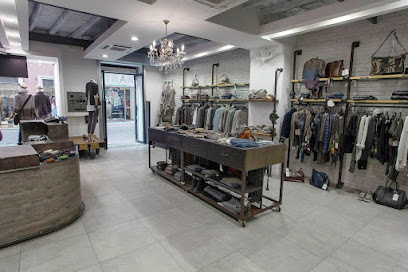
Pulp vintage
Discover timeless fashion treasures at Pulp Vintage, a unique clothing store in the heart of Rome, where each piece tells a story.
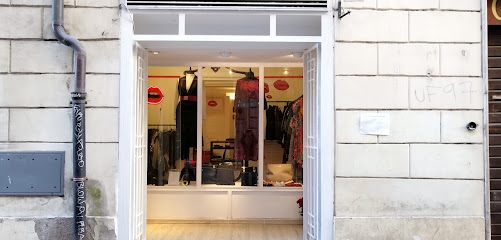
G'local Boutique
Explore the essence of Italian fashion at G'local Boutique, where contemporary style meets local craftsmanship in the heart of Rome.
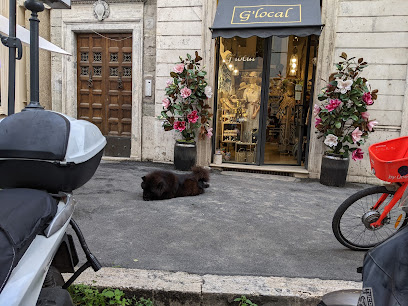
Kokoro
Explore Kokoro, a stylish women's clothing boutique in Rome, offering unique fashion pieces and a memorable shopping experience.
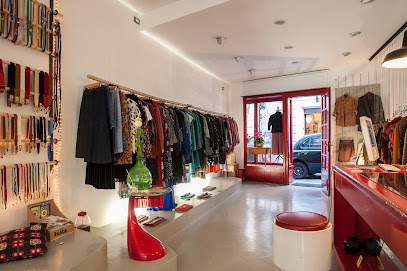
Etro Boutique ROME
Explore the elegance of Etro Boutique in Rome, a premier destination for haute couture and fashion accessories that define luxury and style.
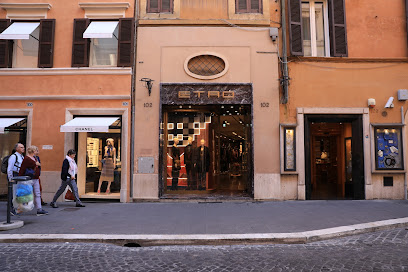
Essential bars & hidden hideouts
Bar San Calisto | Roma
Discover the essence of Rome at Bar San Calisto, where local flavors meet a vibrant atmosphere in the heart of Trastevere.
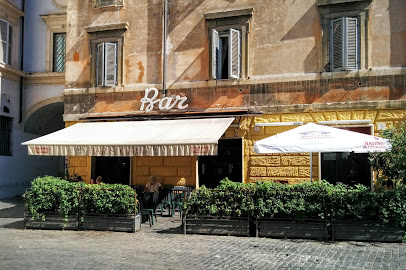
FRENI E FRIZIONI
Experience the vibrant nightlife of Rome at Freni e Frizioni, the cocktail bar blending tradition with innovation in every sip.
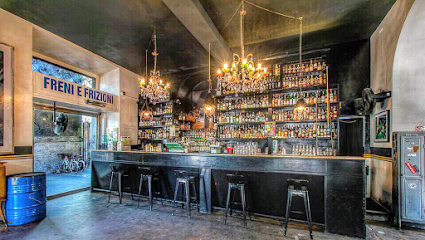
Blackmarket Hall
Discover Blackmarket Hall: A vibrant cocktail bar and bistro in Rome offering delicious food, exquisite cocktails, and live music in a lively atmosphere.
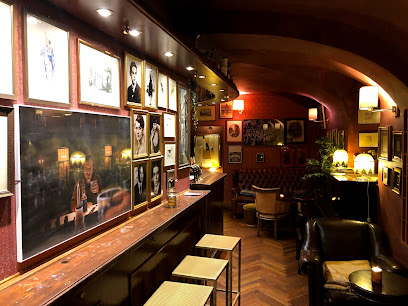
Ristorante Bar del Fico
Discover the vibrant atmosphere and delightful Italian cuisine at Ristorante Bar del Fico, the perfect spot for tourists in Rome.
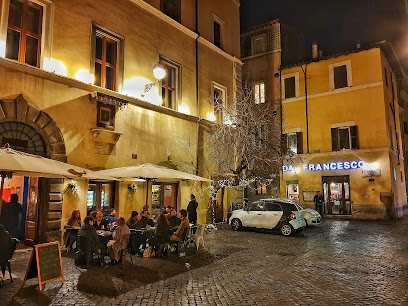
Cul De Sac
Discover Cul De Sac, a premier gastropub and wine bar in Rome, offering a fusion of exquisite cuisine and an extensive wine selection in a cozy setting.
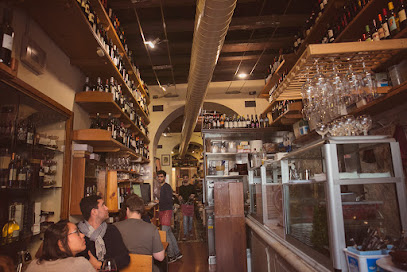
Salotto42
Experience the vibrant atmosphere and innovative cocktails at Salotto42, an iconic cocktail bar in the heart of Rome's historic district.

Drink Kong
Experience the art of cocktail making at Drink Kong, a premier cocktail bar in Rome, where creativity meets flavor in every glass.
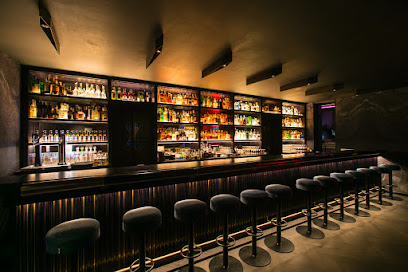
Harry's Bar
Experience the elegance of Harry's Bar in Rome, where exquisite cuisine, classic cocktails, and live music create unforgettable memories.
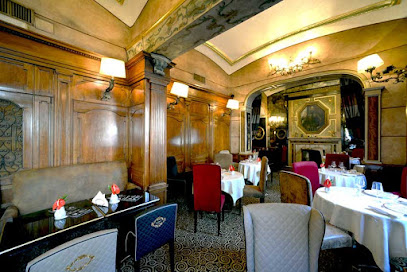
Jerry Thomas Speakeasy
Experience the essence of vintage Rome at Jerry Thomas Speakeasy, where exquisite cocktails meet an enchanting ambiance in a hidden bar.
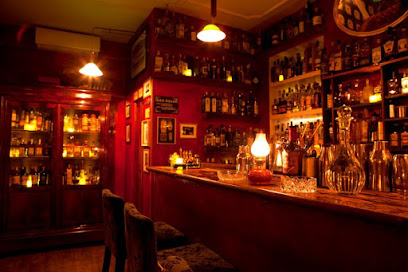
The Race Club
Experience the vibrant nightlife of Rome at The Race Club, a premier cocktail bar known for its exquisite drinks and lively atmosphere.

La Botticella of Poggi Giovanni
Experience the vibrant atmosphere and exquisite wines at La Botticella of Poggi Giovanni, a charming bar in the heart of Rome.
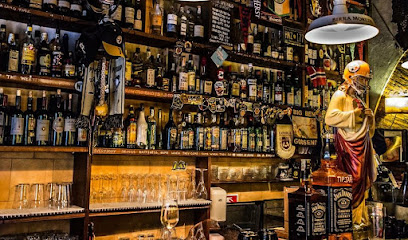
The Basement - Pub. Cocktail Bar. Events
Discover the vibrant atmosphere and expertly crafted cocktails at The Basement, a must-visit pub in Rome's Prati district for an unforgettable night out.
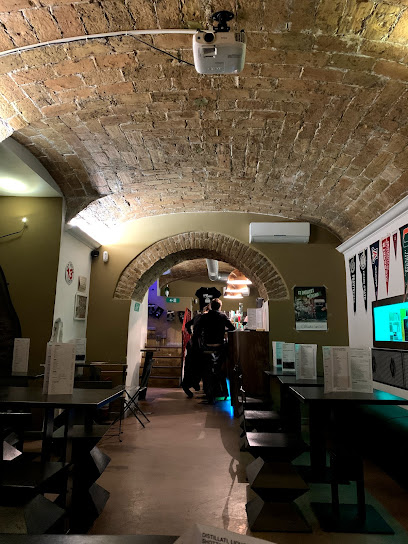
Club Derrière
Experience the vibrant nightlife of Rome at Club Derrière, where eclectic cocktails and a lively atmosphere await you.
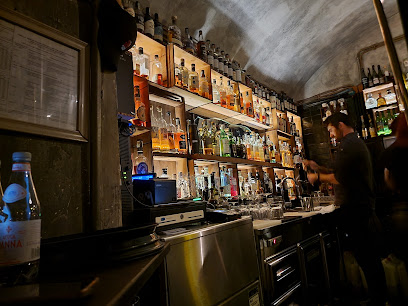
The Hole Trastevere
Discover the vibrant nightlife of Trastevere at The Hole, a cocktail bar blending creative drinks and local culture in the heart of Rome.
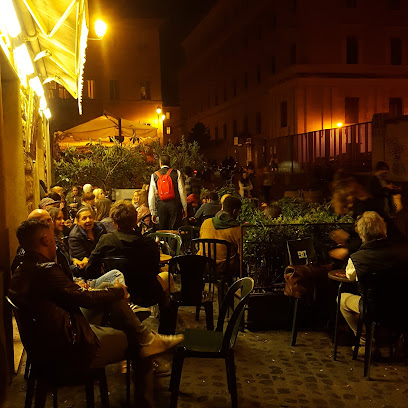
Drink Art Gallery
Discover the Drink Art Gallery in Rome, where cocktail artistry meets creative expression in a vibrant bar setting.
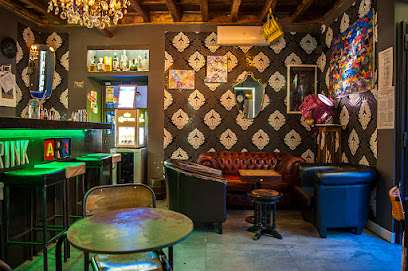
Travel experiences inspired by this city
Explore more travel diariesLocal Phrases
-
- HelloCiao
[chow] - GoodbyeArrivederci
[ah-ree-veh-dehr-chee] - YesSì
[see] - NoNo
[no] - Please/You're welcomePer favore/Prego
[pehr fah-voh-reh/preh-goh] - Thank youGrazie
[grah-tsyeh] - Excuse me/SorryMi scusi/Scusa
[mee skoo-zee/skoo-sah] - How are you?Come stai?
[koh-meh stah-ee] - Fine. And you?Bene. E tu?
[beh-neh. eh too] - Do you speak English?Parli inglese?
[pahr-lee een-gleh-zeh] - I don't understandNon capisco
[nohn kah-pee-skoh]
- HelloCiao
-
- I'd like to see the menu, pleaseVorrei vedere il menu, per favore
[vohr-ray veh-deh-reh eel meh-noo, pehr fah-voh-reh] - I don't eat meatNon mangio carne
[nohn mahn-joh kahr-neh] - Cheers!Salute!
[sah-loo-teh] - I would like to pay, pleaseVorrei pagare, per favore
[vohr-ray pah-gah-reh, pehr fah-voh-reh]
- I'd like to see the menu, pleaseVorrei vedere il menu, per favore
-
- Help!Aiuto!
[ah-yoo-toh] - Go away!Vai via!
[vah-ee vee-ah] - Call the Police!Chiama la polizia!
[kyah-mah lah poh-lee-tsya] - Call a doctor!Chiama un dottore!
[kyah-mah oon doh-toh-reh] - I'm lostMi sono perso
[mee soh-noh pehr-soh] - I'm illSono malato
[soh-noh mah-lah-toh]
- Help!Aiuto!
-
- I'd like to buy...Vorrei comprare...
[vohr-ray kohm-prah-reh] - I'm just lookingSto solo guardando
[stoh soh-loh gwahr-dahn-doh] - How much is it?Quanto costa?
[kwahn-toh koh-stah] - That's too expensiveÈ troppo caro
[eh troh-poh kah-roh] - Can you lower the price?Puoi abbassare il prezzo?
[pwah-ee ahb-bahs-sah-reh eel preh-tsoh]
- I'd like to buy...Vorrei comprare...
-
- What time is it?Che ora è?
[keh oh-rah eh] - It's one o'clockÈ l'una
[eh loo-nah] - Half past (10)Sono le dieci e mezza
[soh-noh leh dyeh-chee eh meht-sah] - MorningMattina
[maht-tee-nah] - AfternoonPomeriggio
[poh-meh-ree-joh] - EveningSera
[seh-rah] - YesterdayIeri
[yeh-ree] - TodayOggi
[oh-jee] - TomorrowDomani
[doh-mah-nee] - 1Uno
[oo-noh] - 2Due
[doo-eh] - 3Tre
[treh] - 4Quattro
[kwah-troh] - 5Cinque
[cheen-kweh] - 6Sei
[say] - 7Sette
[seht-teh] - 8Otto
[oh-ttoh] - 9Nove
[noh-veh] - 10Dieci
[dyeh-chee]
- What time is it?Che ora è?
-
- Where's a/the...?Dov'è...?
[doh-veh] - What's the address?Qual è l'indirizzo?
[kwahl eh leen-dee-reet-soh] - Can you show me (on the map)?Puoi mostrarmi (nella mappa)?
[pwah-ee mohs-trar-mee (neh-lah mahp-pah)] - When's the next (bus)?Quando passa il prossimo (bus)?
[kwahn-doh pahs-sah eel prohs-see-moh (boos)] - A ticket (to ....)Un biglietto (per ....)
[oon beel-yet-toh (pehr)]
- Where's a/the...?Dov'è...?
History of Rome
-
According to legend, Rome was founded on April 21, 753 BCE, by the twin brothers Romulus and Remus. Raised by a she-wolf, the twins decided to establish a city but quarreled over its location. Romulus ultimately killed Remus and named the city after himself. This mythological origin story intertwines with archaeological evidence indicating settlement in the area as early as the 8th century BCE.
-
In 509 BCE, Rome transitioned from a monarchy to a republic, a significant turning point in its history. The Roman Republic was characterized by a complex system of checks and balances, featuring elected officials such as consuls, the Senate, and popular assemblies. This period saw the expansion of Roman influence throughout the Italian peninsula and set the stage for Rome's eventual dominance in the Mediterranean.
-
On March 15, 44 BCE, Julius Caesar, a pivotal figure in Roman history, was assassinated by a group of senators led by Brutus and Cassius. This event, known as the Ides of March, was driven by fears that Caesar aimed to establish himself as a monarch. The assassination plunged Rome into a series of civil wars, leading to the end of the Roman Republic and the rise of the Roman Empire.
-
The Roman Empire began in 27 BCE when Augustus (formerly Octavian) became the first Roman emperor. This era marked a time of unprecedented territorial expansion and relative peace known as the Pax Romana. The Empire's influence extended across Europe, North Africa, and the Middle East, facilitating the spread of Roman culture, law, and infrastructure.
-
The fall of the Western Roman Empire is traditionally dated to 476 CE, when the last Roman emperor, Romulus Augustulus, was deposed by the Germanic chieftain Odoacer. This marked the end of ancient Rome and the beginning of the Middle Ages. Numerous factors contributed to Rome's decline, including economic troubles, military defeats, and internal strife.
-
Rome experienced a cultural and artistic revival during the Renaissance, beginning in the 14th century and peaking in the 15th and 16th centuries. This period saw the construction of iconic landmarks such as St. Peter's Basilica and the Sistine Chapel, with contributions from legendary artists like Michelangelo, Raphael, and Leonardo da Vinci. The Renaissance reinforced Rome's status as a center of art, culture, and religion.
-
Rome became the capital of the newly unified Kingdom of Italy in 1870. The unification process, known as the Risorgimento, was driven by figures like Giuseppe Garibaldi and Count Camillo di Cavour. The capture of Rome marked the culmination of efforts to consolidate various independent states and territories on the Italian peninsula into a single nation-state.
-
During World War II, Rome was occupied by German forces from 1943 until its liberation by Allied troops on June 4, 1944. The city endured significant hardship during the occupation, including bombings and food shortages. The liberation of Rome was a crucial moment in the Italian Campaign, paving the way for the eventual defeat of Axis forces in Italy.
-
Today, Rome is a bustling metropolis that seamlessly blends its rich historical heritage with modern life. The city is home to numerous UNESCO World Heritage Sites, including the Colosseum, the Roman Forum, and the Vatican City. As the capital of Italy, Rome continues to be a center of political, cultural, and religious significance, attracting millions of tourists from around the world each year.
Rome Essentials
-
Rome is served by two main airports: Leonardo da Vinci International Airport (Fiumicino) and Ciampino Airport. Fiumicino is the larger of the two and handles most international flights. Ciampino mainly serves budget airlines. From Fiumicino, you can take the Leonardo Express train directly to Termini Station in central Rome, which takes about 30 minutes. From Ciampino, you can take a bus to Anagnina Metro Station and then transfer to the Metro Line A to reach central Rome.
-
Rome has an extensive public transportation system, including buses, trams, and two metro lines. The ATAC operates the city's public transport, and tickets can be purchased at metro stations, newsstands, and convenience stores. Taxis are also available but can be expensive. For a more scenic experience, consider renting a bike or scooter. Walking is a great way to explore the city's historic center, as many attractions are within close proximity.
-
The official currency in Italy is the Euro (EUR). Credit cards are widely accepted in hotels, restaurants, and shops. However, it is advisable to carry some cash for smaller establishments and markets. ATMs are readily available throughout the city. Be aware that some places may not accept American Express, so having a Visa or MasterCard as a backup is a good idea.
-
Rome is generally a safe city, but like any major tourist destination, it has areas where pickpocketing and scams are more common. Be particularly vigilant in crowded areas such as Termini Station, the Colosseum, and popular tourist spots like the Spanish Steps and Trevi Fountain. Avoid isolated areas at night and keep an eye on your belongings. Trastevere, while popular for its nightlife, requires caution after dark.
-
In case of emergency, dial 112 for immediate assistance, which is the general emergency number in Italy. For police assistance, you can also dial 113. The major hospitals in Rome include Policlinico Umberto I and Ospedale San Giovanni. Pharmacies are available throughout the city, and many have a green cross sign. Most pharmacies have a list of 24-hour locations posted on their doors.
-
Fashion: Do dress smartly and modestly, especially when visiting religious sites. Avoid wearing shorts and sleeveless tops in churches. Religion: Do respect local customs and traditions. Always cover your shoulders and knees when entering churches. Public Transport: Do validate your ticket before boarding. Don’t forget to validate, as fines are hefty. Greetings: Do greet people with a polite 'Buongiorno' or 'Buonasera.' Eating & Drinking: Do try local dishes and wines. Italians appreciate when you enjoy their cuisine. Don’t ask for modifications to traditional recipes.
-
To experience Rome like a local, visit the local markets such as Campo de' Fiori or Testaccio Market for fresh produce and local delicacies. Take a stroll through lesser-known neighborhoods like Monti and Garbatella for a more authentic experience. Enjoy an aperitivo in a local bar in Trastevere or Pigneto. When visiting popular sites, try to go early in the morning or late in the afternoon to avoid the crowds.
Nearby Cities to Rome
-
Things To Do in St. Peter's Square
-
Things To Do in Apostolic Palace
-
Things To Do in Sistine Chapel
-
Things To Do in Vatican Necropolis
-
Things To Do in St. Peter's Basilica
-
Things To Do in Gregorian Etruscan Museum
-
Things To Do in Vatican Museums
-
Things To Do in Vatican Pinacoteca
-
Things To Do in Vatican Gardens
-
Things To Do in Orvieto
-
Things To Do in Assisi
-
Things To Do in Perugia
-
Things To Do in Montepulciano
-
Things To Do in Arezzo
-
Things To Do in Siena















